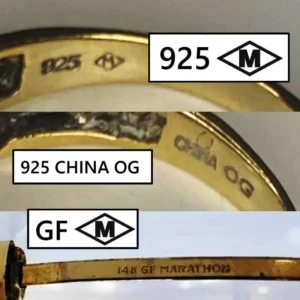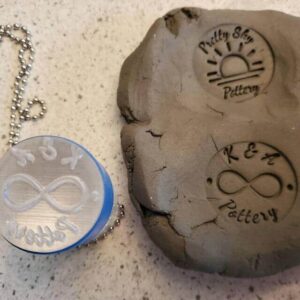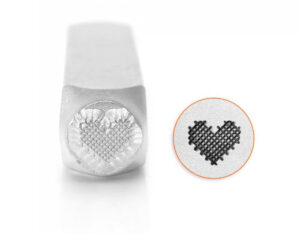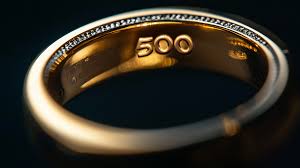Jewelry hallmarks and stamps are essential for identifying the authenticity, metal purity, and origin of a piece. These markings provide valuable information about the composition and quality of jewelry, ensuring that buyers make informed purchases. Understanding these stamps can help prevent fraud, identify valuable pieces, and determine the best care practices for different metals. This guide explores common hallmarks, their meanings, and how to interpret them.
Understanding Jewelry Hallmarks and Stamps
1. What Are Jewelry Hallmarks and Stamps?
- Definition: Hallmarks are symbols, letters, or numbers stamped onto jewelry to indicate metal purity, manufacturer, or country of origin.
- Purpose: They help verify the authenticity of precious metals and protect buyers from counterfeit or misrepresented pieces.
- Location: Typically found on the inside of rings, clasps of necklaces and bracelets, or the back of earrings and brooches.
2. Common Metal Purity Stamps
Different metals have unique hallmarking systems that indicate their composition and purity.
Gold Hallmarks
- 24K (999 or 999.9): Pure gold (99.9% gold), soft and rarely used for jewelry.
- 22K (916): 91.6% gold, commonly used in high-karat jewelry.
- 18K (750): 75% gold, durable and widely used in fine jewelry.
- 14K (585): 58.5% gold, a balance of durability and gold content.
- 10K (417): 41.7% gold, strong and more affordable.
- Gold-Plated (GP) or Gold-Filled (GF): A thin layer of gold over another metal, less valuable than solid gold.
Silver Hallmarks
- Sterling Silver (925): 92.5% pure silver, commonly used in fine jewelry.
- Fine Silver (999): 99.9% pure silver, softer and more prone to scratches.
- Silver-Plated: A thin layer of silver over another metal, often marked as EP (Electroplated).
Platinum Hallmarks
- 950 Platinum: 95% pure platinum, highly durable and hypoallergenic.
- 900 Platinum: 90% pure platinum, slightly less durable but still premium.
- 850 Platinum: 85% platinum, often used in antique jewelry.
Palladium Hallmarks
- 950 Palladium: 95% pure palladium, lightweight and tarnish-resistant.
- 500 Palladium: 50% palladium, commonly alloyed with other metals.
3. Country-Specific Hallmarking Systems
Many countries have unique hallmarking systems to certify metal purity.
- United Kingdom: Includes the Assay Office mark, metal purity, and maker’s mark.
- United States: The Federal Trade Commission (FTC) regulates hallmarking, but no official government hallmarking system exists.
- France: Uses the eagle’s head (gold) and Minerva’s head (silver) as official marks.
- Italy: Features the star mark and province code for gold jewelry.
- Switzerland: Uses a Saint Bernard dog head to certify platinum.
4. Maker’s Marks and Brand Stamps
- Definition: A maker’s mark identifies the jewelry’s manufacturer or designer.
- Famous Jewelry Houses: Brands like Tiffany & Co., Cartier, and Van Cleef & Arpels have unique hallmarks.
- Custom and Independent Jewelers: Many independent artisans use personalized symbols or initials as their signature.
5. How to Identify and Verify Hallmarks
- Magnification Tools: Use a jeweler’s loupe or magnifying glass to inspect small markings.
- Online Hallmark Databases: Websites like the International Hallmark Database provide reference guides.
- Professional Appraisals: A certified jeweler or gemologist can verify authenticity.
- Testing Methods: Acid testing, X-ray fluorescence, and electronic testers help confirm metal purity.
6. Common Misconceptions About Jewelry Stamps
- Hallmarks Do Not Indicate Value: They confirm authenticity but do not determine resale value.
- Not All Jewelry Has Hallmarks: Some antique or custom-made pieces may lack markings.
- Plated Jewelry May Still Have Stamps: A gold-plated piece can bear a karat stamp but include extra indicators like “GP” or “HGE” (Heavy Gold Electroplate).
7. Why Hallmarks Matter When Buying Jewelry
- Prevents Fraud: Ensures you are purchasing genuine precious metal jewelry.
- Helps with Resale and Appraisal: A properly stamped piece is easier to authenticate and value.
- Aids in Proper Care: Different metals require specific maintenance routines to preserve longevity.
- Ensures Ethical Sourcing: Some hallmarks indicate conflict-free or responsibly sourced materials.
Understanding jewelry hallmarks and stamps is essential for making informed purchasing decisions. Whether buying new, vintage, or antique jewelry, checking for proper hallmarks ensures authenticity, quality, and fair value. By familiarizing yourself with metal purity markings, country-specific systems, and maker’s marks, you can confidently invest in jewelry that meets your expectations.











